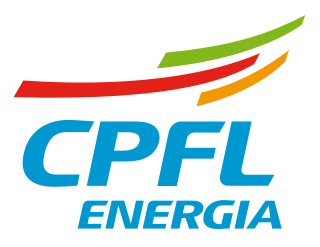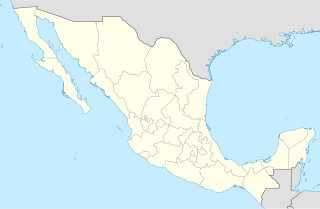
Icém is a municipality in the northern part of the state of São Paulo in Brazil. The population is 7,997 in an area of 362.59 km². It is part of the Microregion of São José do Rio Preto. It is also known as Princesa do Vale, or "Princess of the Valley." Icem is situated near the important urban centers of São José do Rio Preto, Olímpia, Catanduva, and Mirassol. The Marimbondo Dam, which forms a big reservoir in the Rio Grande, is situated close to Icém.

Rio Grande is a river in south-central Brazil. It rises in the Mantiqueira Mountains in the state of Minas Gerais and descends inland, west-northwestward. Its lower course marks a portion of the Minas Gerais-São Paulo border. At the Mato Grosso do Sul state border, after a course of 1,090 km (677 mi), it joins the Paranaíba River to form the Upper Paraná River.

The Motagua River is a 486-kilometre (302 mi) long river in Guatemala. It rises in the western highlands of Guatemala where it is also called Río Grande, and runs in an easterly direction to the Gulf of Honduras. The final few kilometres of the river form part of the Guatemala/Honduras border. The Motagua River basin covers an area of 12,670 square kilometres (4,890 sq mi) and is the largest in Guatemala.

EDP - Energias de Portugal ranks among Europe's major electricity operators, as well as being one of Portugal's largest business groups.

Eletrobras is a major Brazilian electric utilities company. The company's headquarters are located in Rio de Janeiro.

The Grande de Santiago River is one of the longest rivers in Mexico, measuring up 433 km (269 mi) long. The river begins at Lake Chapala and continues roughly north-west through the Sierra Madre Occidental, receiving the Verde, Juchipila, Bolaños, and other tributaries. At La Yesca, the La Yesca Dam was completed in 2012 and the El Cajón Dam was completed downstream in 2007. Below El Cajón, the Aguamilpa Dam was completed in 1993, creating a reservoir covering a large part of the territory of the municipality of El Nayar in Nayarit. From Aguamilpa, the river descends to the coastal lowlands, passing by Santiago Ixcuintla and empties into the Pacific Ocean, 16 km (10 mi) northwest of San Blas, in Nayarit. The river is viewed by some sources as a continuation of the Lerma River, which flows into Lake Chapala.

CPFL Energia is the second largest non state-owned group of electric energy generation and distribution in Brazil and the third biggest Brazilian electric utility company, after Eletrobras and Energisa. The corporation is composed by CPFL Brasil, CPFL Piratininga, CPFL Paulista, CPFL Geração, CPFL Renováveis, Rio Grande Energia (RGE) and SEMESA. Each of these companies operates as a holding company that owns dozens of other companies. Its headquarters are located in Campinas, the third largest city in state of São Paulo.
Renewable energy in Portugal was the source for 25.7% of energy consumption in 2013. In 2014, 63% of Portugal's electricity needs were supplied by renewable sources. In 2016, 58% of power produced in Portugal came from renewable sources, an increase against the previous year (50.4%), while renewable energy consumption represented 27.2% of total consumption.

Cipotânea is a Brazilian municipality located in the state of Minas Gerais. The city belongs to the mesoregion of Zona da Mata and to the microregion of Viçosa. Its area is 153.435 km².

Luvianos is a small town and municipality located in the southwest of the State of Mexico. It gained municipal status in 2000. People can access Luvianos by driving Federal Road 134 south from Toluca, and then take a detour about 25 minutes north of Tejupilco. The name is derived from a hacienda what was established during colonial times.

EDP Renováveis is a leading renewable energy company registered in Oviedo and headquartered in Madrid that designs, develops, manages and operates power plants that generate electricity using renewable energy sources.

Altamira is a town in the Puerto Plata Province of the Dominican Republic.

Río Pastillo is a river in the municipality of Ponce, Puerto Rico. It is also known as Río Marueño in the area of the municipality where it runs through barrio Marueño. Together with Cañas River, Pastillo forms Matilde River. Pastillo is one of the 14 rivers in the municipality. The river originates at an altitude of 435 feet. Its tributaries are Quebrada Limon and Quebrada del Agua brooks and the river runs for 19 kilometers before feeding into Río Matilde at a height of 15 feet in Barrio Canas Urbano.

The Dona Francisca Hydroelectric Plant is a hydroelectric plant on the Jacuí River in the state of Rio Grande do Sul, Brazil, completed in 2001. It delivers 80 MW guaranteed power.
{{subst:prod|the person named in this articles does not want to be shown here}}














